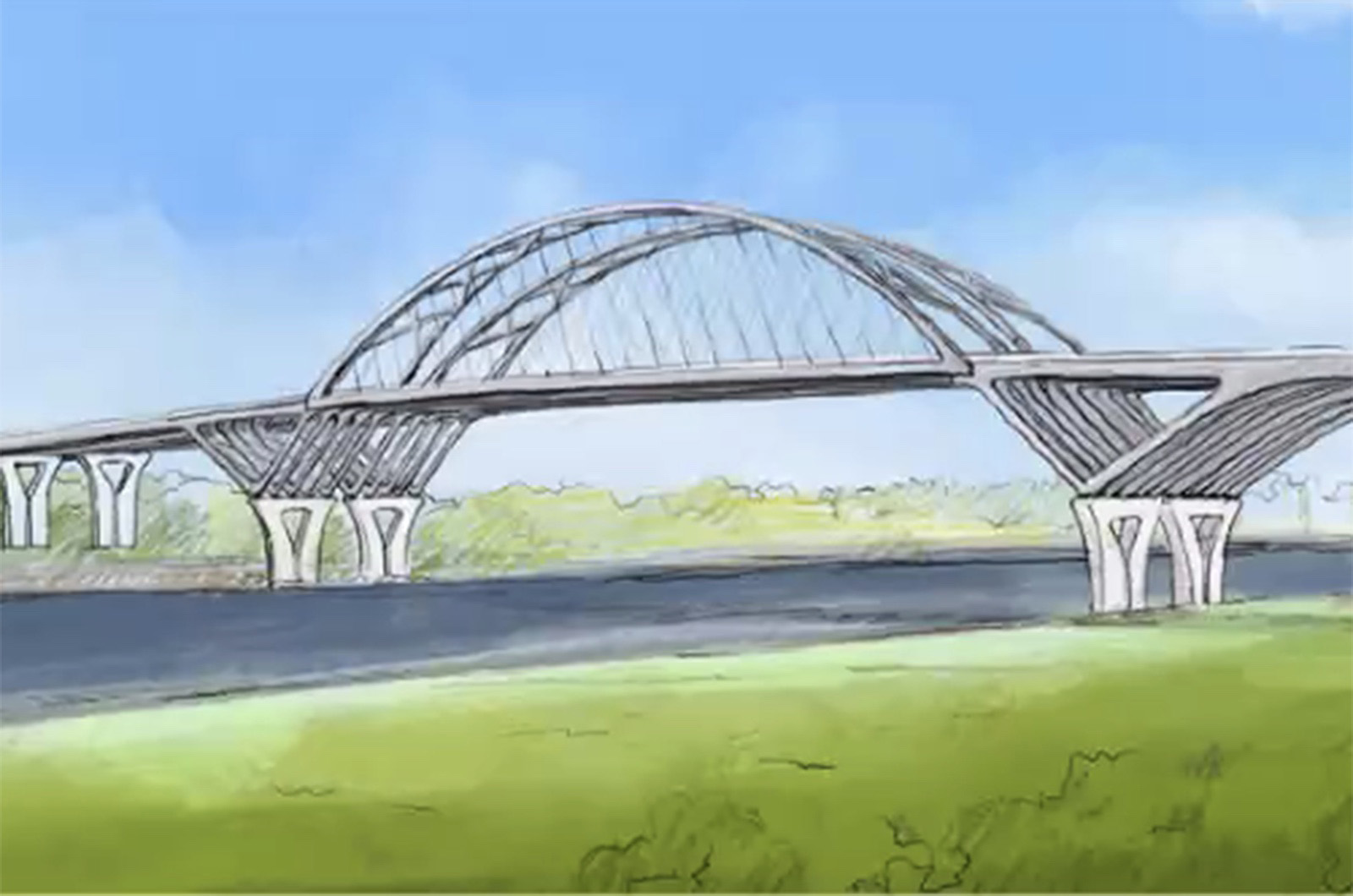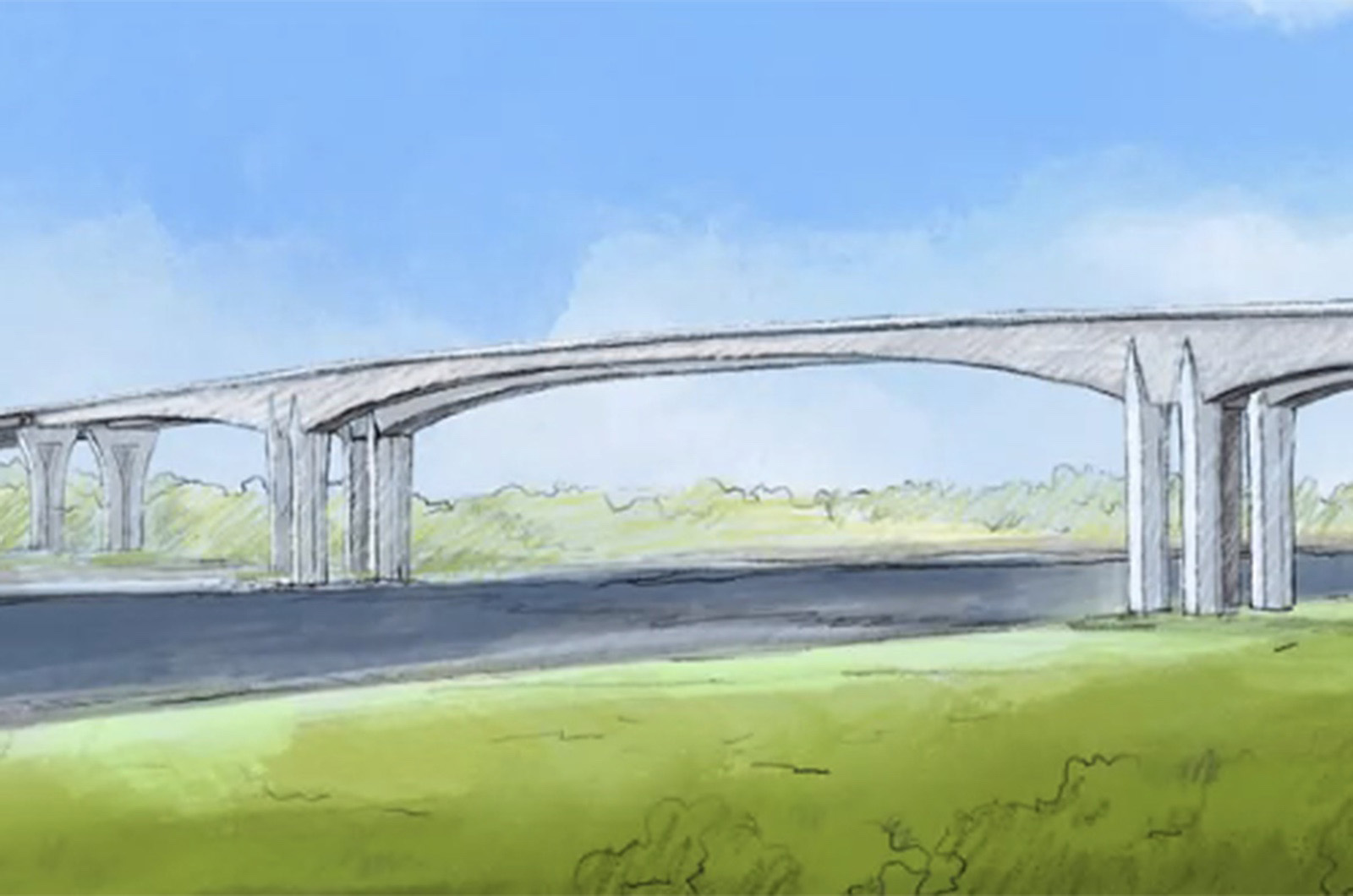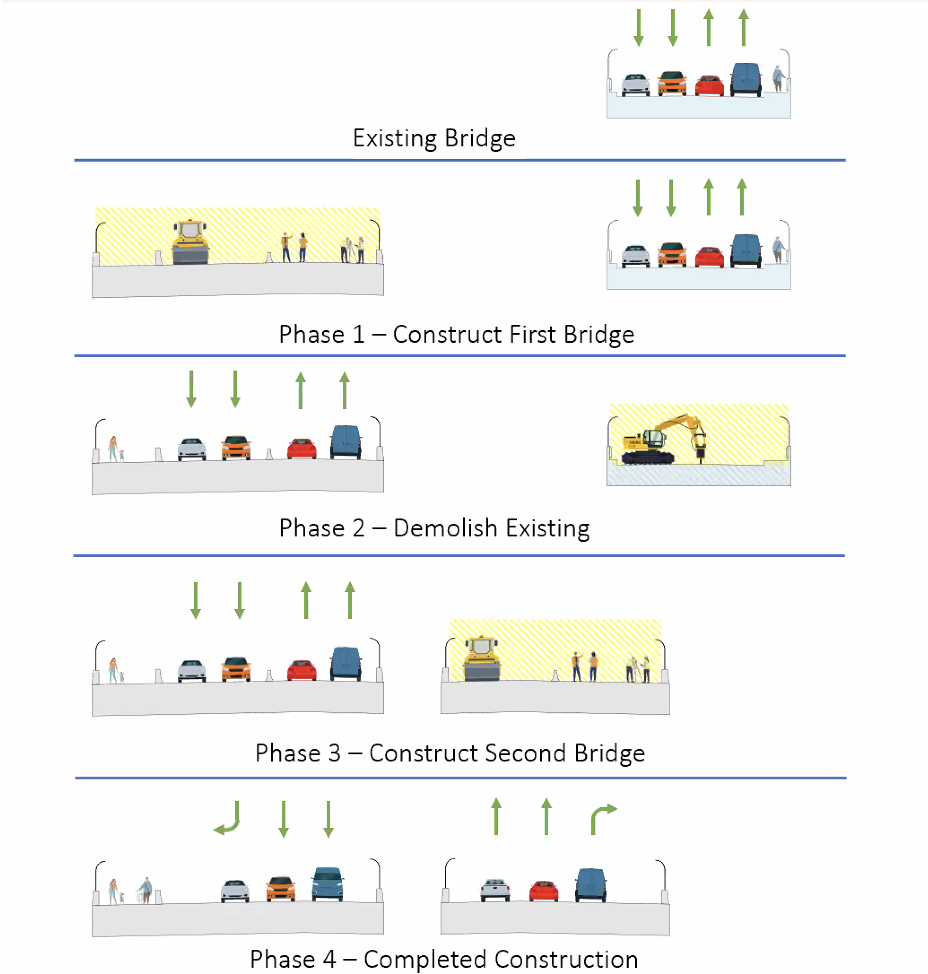After a 2019 study found that the iconic Bourne and Sagamore bridges were “functionally obsolete,” the state Department of Transportation offered its first look at three potential replacements, each of which would have inbound and outbound traffic on separate, closely constructed bridges.
The first of two hearings on the bridge replacements took place at 6 p.m. Tuesday via Zoom and saw over 500 attendees. Hosted by MassDOT program manager Bryan Cordeiro, the meeting focused on the overall purpose and need behind replacing the two structures, which have spanned the Cape Cod Canal and served as a gateway to the Cape and Islands since the 1930s.
The current bridges are both four lanes, with two lanes each of inbound and outbound traffic on the same structure, as well as narrow walking paths.
Although the Army Corps has historically been responsible for the two bridges, it was decided in 2020 that once the project finishes, MassDOT will take over responsibility for the new structures.
The project is still in its nascent stages. Although there are no clear construction timelines, bidding is expected to start around September 2025, with construction beginning roughly 18 months later and estimated to take six to seven years. Construction will be federally funded.
Since both bridges are in urgent need of replacement, the project’s lead structural engineer John Smith said that the fastest way to replace each four-lane bridge was with two, two-lane bridges, so the state can begin diverting traffic away from Bourne and Sagamore as soon as the first bridge is completed.
“This is the quickest way to move traffic,” Mr. Smith said, adding that the new bridges will be built as closely as possible to the existing structures.
A diagram of the construction phases showed that the bridges would only be demolished once the first of their replacement bridges had been built. Traffic would be diverted to the completed first bridge while construction commenced on the second bridge.
Mr. Smith went on to present three possible bridge type options with an eye towards preserving the “iconic gateway experience” of the existing truss bridges. Because the canal and its surrounding area is designated as a historic district, aesthetics and historical context will play a role in the final design, Mr. Smith said, adding that the current design would be too expensive and unwieldy to recreate identically.
“The existing bridges are iconic, well-recognized,” he said. “[They are] associated as a landmark to the Cape Cod Canal and the Cape.”
The first two options, the concrete box girder and the cable stayed bridges options, would be the least historically consistent, Mr. Smith acknowledged. The concrete box girder is an open top bridge with no arch or gateway overhead and wide rails on either side, according to renderings shown at the meeting. Its legs require a deeper concrete foundation, but the structure lends itself well to wind resistance during construction, engineers said. The cable stayed bridge, on the other hand, is best recognized by the Leonard P. Zakim Bunker Hill Memorial Bridge which spans the Charles River in Boston. The cable stayed option features two triangular towers with supporting cables, and is more vulnerable to wind during construction, meaning that adverse weather could delay the overall timeline.
The third option, known as the “arch,” was the clear favorite of the night, and the option engineers are most leaning towards for their recommendation, Mr. Smith said, although MassDOT is still soliciting public comment before engineers make a formal decision. The arch option most closely resembles the existing bridges with its steel network tied arches, Mr. Smith said, and offers the most accelerated construction timeline since its arch can be pre-fabricated off-site and installed relatively quickly with minimal susceptibility to wind.
“This model does provide iconic portal similar to the existing bridges,” Mr. Smith said. “The innovative structural system in a lot of ways harkens back to the innovative structural system of the original.”
“I would agree that the Arch type bridge is best suited for entry to Cape Cod,” attendee Brian Cleary said. “I’ve owned a home in Sagamore Beach since 1965 and excited to see this next step in upleveling living on the Cape.”
All three bridge options would have a shared-use-path for walkers and bikers.
The public is invited to share their opinion of the three bridge types through the MassDOT website, where individuals can complete a short survey. The project is still in early stages, Mr. Cordeiro emphasized, and for that reason officials cannot yet speak to the specifics of bridge accessibility, construction, or how the project will affect neighboring communities.
“We don’t have a design ready to share – we’re a long ways away from that – but when we do have a design we do want to talk with the public, talk with advocacy groups about what their needs are and have adequate multimodal accommodations,” Mr. Cordeiro said.
“This project is really focused on replacing the bridges with the uses in kind,” Army Corps engineer Dave Anderson echoed.
Representative Steven Xiarhos, who represents the fifth district of Barnstable that contains both bridges, expressed support for the upcoming project.
“I know we have a ton of work ahead of us but I was pleased with your presentation and I want you to know that we’re here to get it done,” Mr. Xiarhos said. “We call this the project of a lifetime and I look forward to getting it going.”
MassDOT will continue to hold public hearings at different points of the construction project, Mr. Cordeiro assured, once more details crystallize. Individuals can email comments or questions to MassDOTMajorProjects@dot.state.ma.us.
For more information about the Cape Cod Canal bridge project, visit www.mass.gov/cape-bridges.










Comments (23)
Comments
Comment policy »